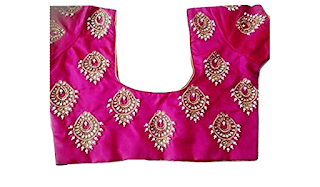Explore the role of technology in transforming the world of fashion.
Introduction:
Technology has become an integral part of our lives, and it has greatly influenced various sectors, including the fashion industry. From the way clothes are designed to how they are marketed and sold, technology has revolutionized every aspect of the fashion business. This article explores the role of technology in transforming the world of fashion and highlights its impact on the industry's efficiency, creativity, and sustainability.
The Evolution of Fashion Design:
Gone are the days when designers relied solely on pen and paper to bring their ideas to life. With the advancement in technology, fashion designers now leverage sophisticated software and computer-aided design (CAD) programs to visualize and create their designs. These tools allow designers to experiment with different patterns, colors, and textures, giving them the freedom to explore their creativity like never before.
Smart Textiles and Wearable Technology:
Technology has enabled the creation of innovative fabrics and materials in the fashion industry. Smart textiles, also known as e-textiles, are fabrics embedded with technology that can sense, react, and adapt to various conditions. For example, we now have garments that can regulate body temperature, monitor heart rate, and even charge electronic devices.
Furthermore, wearable technology has become increasingly popular in the fashion industry. From fitness trackers to smartwatches, technology has seamlessly merged with fashion to create stylish accessories that also enhance our daily lives. These wearable devices not only track our activity levels but also provide valuable health insights and notifications.
The Rise of E-Commerce and Virtual Fashion Shows:
With technology, fashion has become more accessible than ever. E-commerce platforms have provided a convenient way for consumers to shop for clothing, eliminating the need to visit physical stores. This shift towards online shopping has opened up new opportunities for fashion brands to connect with customers globally.
Moreover, technology has transformed the way fashion shows are conducted. Virtual fashion shows have gained popularity, allowing designers to showcase their collections to a global audience without the limitations of physical venues. These digital experiences provide an immersive and interactive way for viewers to engage with fashion, breaking the barriers of location and time.
Enhancing the Retail Experience:
Technology has revolutionized the in-store retail experience by introducing various innovations. Augmented reality (AR) technology allows customers to virtually try on clothes and accessories, eliminating the need for physical fitting rooms. This enhances the shopping experience and reduces the return rate of online purchases.
Additionally, advanced data analytics and artificial intelligence (AI) have transformed the way retailers understand consumer behavior and preferences. Retailers can now personalize their offerings and marketing campaigns based on individual customer data, resulting in a more tailored and relevant shopping experience.
Sustainability and Ethical Practices:
Technology plays a crucial role in promoting sustainability and ethical practices in the fashion industry. With the rise of fast fashion and its impact on the environment, technology is being used to develop eco-friendly materials and manufacturing processes.
For instance, 3D printing technology has the potential to reduce waste and minimize the carbon footprint of production. It allows garments to be created with precision, eliminating the need for excess fabric and reducing textile waste.
Furthermore, blockchain technology is being utilized to ensure transparency and traceability in the supply chain. This technology tracks the journey of a garment from raw materials to the final product, providing consumers with information about its origin and ethical manufacturing practices.
Conclusion:
Technology has undoubtedly revolutionized the fashion industry, driving innovation, improving efficiency, and promoting sustainability. From the way clothes are designed and produced to how they are marketed and sold, technology has transformed every aspect of the fashion business.
As technology continues to advance, we can expect further disruptions and breakthroughs in the fashion industry. From virtual reality shopping experiences to garments that integrate advanced technologies, the possibilities are endless. Fashion and technology are now inseparable, and their synergy will continue to shape the future of the fashion world.
.jpg)


Comments
Post a Comment